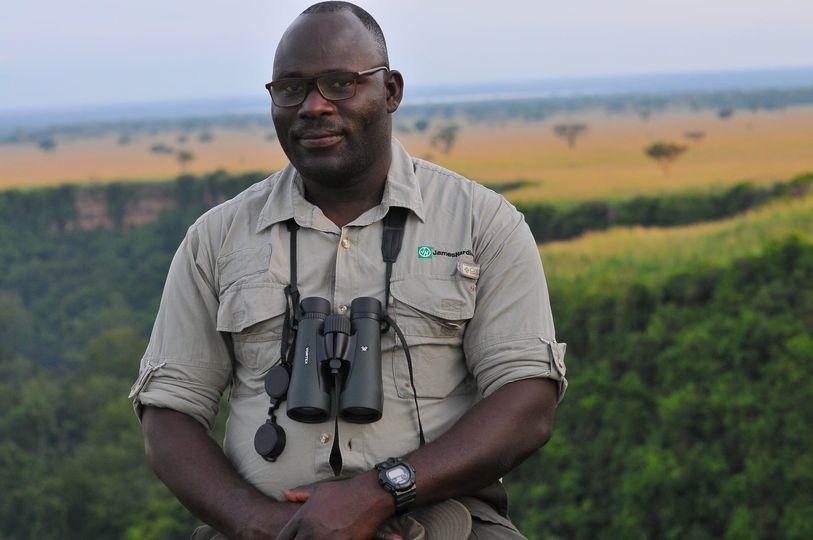
What is your favorite bird species?
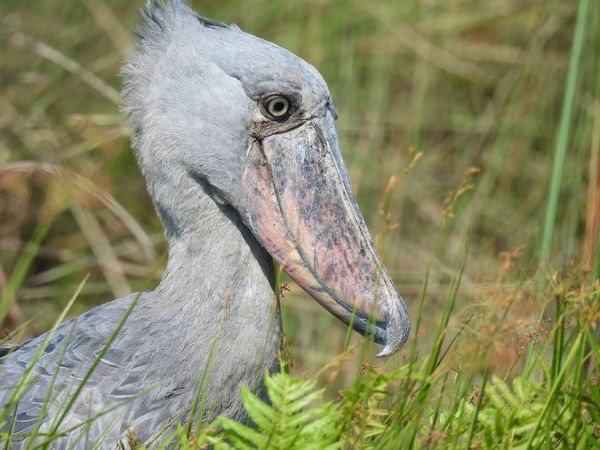
I love all birds but the Shoebill is my favorite bird.
What is your name, and where do you live?
My name is Kenneth Tumusiime, I live in Nyabushozi, Kiruhura District in south-western Uganda near Lake Mburo National Park
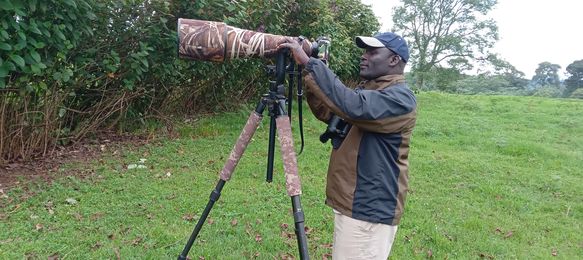
What are the main regions or locations you cover as a bird guide?
I cover all four regions of East Africa: Uganda, Kenya, Tanzania, and Rwanda
How long have you been a bird guide?
I have been a guide for 16 years now
Grey-crowned Crane
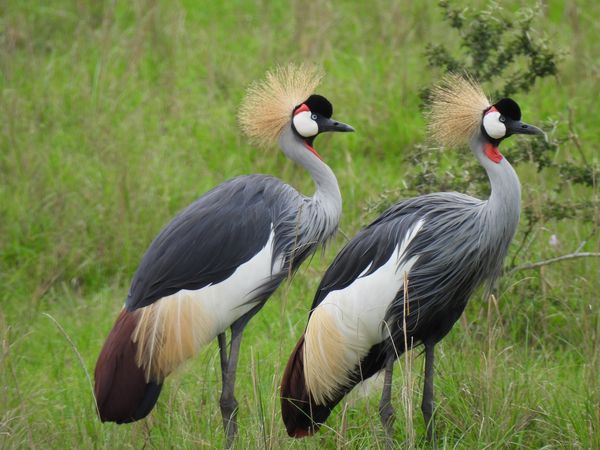
How did you get into bird guiding?
My career started in 2000 when I joined the Lion Project Team in Murchison Falls National Park led by Dr Sifert during school holidays. Sifert inspired me to join Murchison Falls National Park in northwestern Uganda in 2008, and I started working as a trainee site guide. My focus was on birds, and I started attending birding training and excursions. Eventually, my guiding skills led to my promotion to the Head of the Department of Training & Guiding.
What are the aspects of being a bird guide that you like best? Which aspects do you dislike most?
Being a bird guide I have enjoyed and achieved a lot, I have been able to discover the universe and I got connected to nature traveling. I have fulfilled my yearning of meeting people from all over the globe. Also, the community mindset of the locals in areas where I take my clients for birding has greatly improved.
As a bird guide, I dislike seeing encroachment on wetlands and other wildlife habitats by the locals and also depletion of the environment by the growing numbers of factories/industries that fail to follow environmental laws and Standard operating guidelines!
What are the top 5-10 birds in your region that you think are the most interesting for visiting birders?
There are several birds that are sought by all birders across the globe. Here in Uganda, these include
- Shoebill
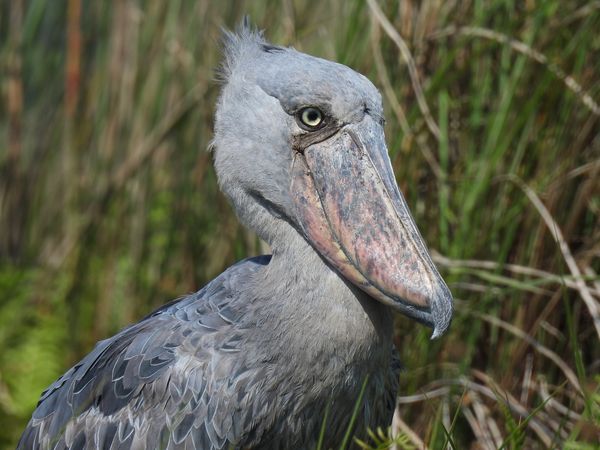
- Green-breasted Pitta
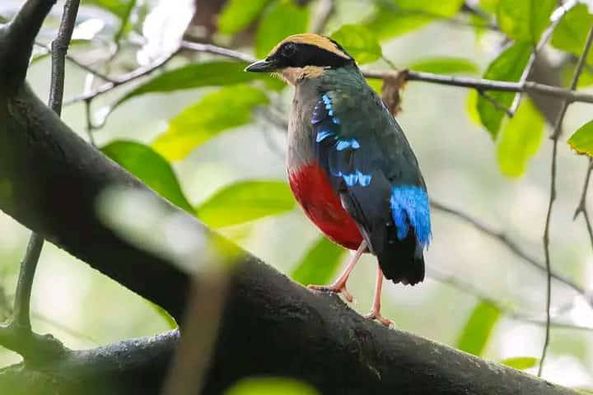
- Green Broadbill
- Shelley’s Crimsonwing
- Great blue Turaco
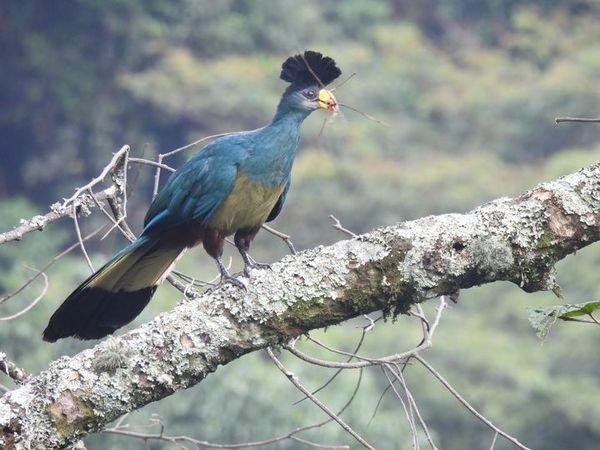
- Purple-breasted Sunbird
- Regal Sunbird
- Rwenzori Turaco
- Handsome Francolin
- Rwenzori Blue-headed Sunbird
- Narina Trogon
- Bar-tailed Trogon
- Rwenzori Nightjars
- Pel’s Fishing Owl
Can you outline at least one typical birdwatching trip in your area? Please briefly describe the locations, the key birds, and the approximate duration of such a trip
The 14 Days Exciting Uganda Birding Tour starts and ends at Entebbe International Airport and combines birding and wildlife watching. Habitats covered include equatorial forests, wetlands, savannahs, highland forests, Albertine Rift Mountains, semi-arid scrublands, and lakes.
This tour is set to cover the unique habitats of Uganda, the Pearl of Africa. These habitats are home to the region’s most unique and restricted-range species. We intend to cover the great Albertine rift for the montane forest birds and other wildlife, the mid-elevation birds at Budongo Forest, Bwindi Impenetrable, Mabamba Bay Swamp, Queen Elizabeth National Park, Kibale Forest National Park, Semuliki National Park, Murchison Falls National Park, Cultivated Lands, Lake Victoria. While the tour covers montane habitat, the pace will generally be easy.
Abyssinian Roller
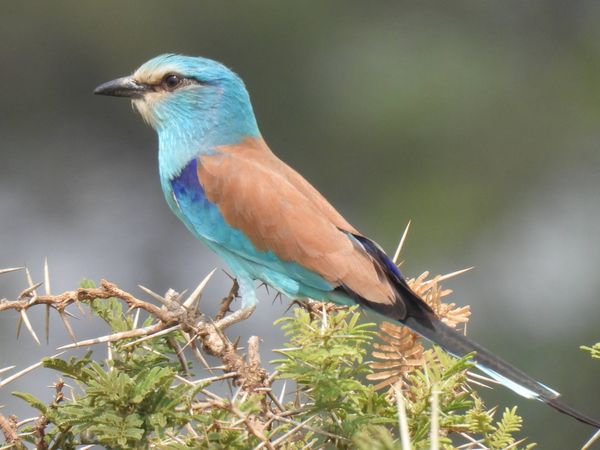
Key Bird Species of the tour include Shoebill, Pel’s Fishing Owl, African Finfoot, Red-throated Bee-eater, Purple-breasted Sunbird, Regal Sunbird, Papyrus Gonolek, Narina Trogon, Bar-tailed Trogon, Handsome Francolin, Black Bee-eater, Saddle-billed Stork, Egyptian Plover, Northern Carmine Bee-eater, Great Blue Turaco, Ross’s Turaco, Crested Barbet, and many raptors and waders.
Red-throated Bee-eater
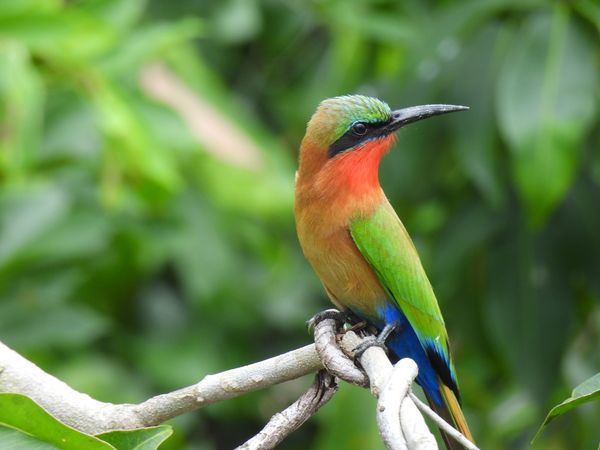
African Finfoot
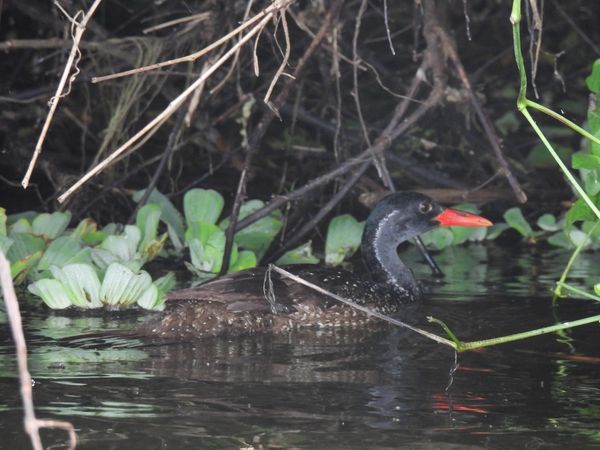
Saddle-billed Stork
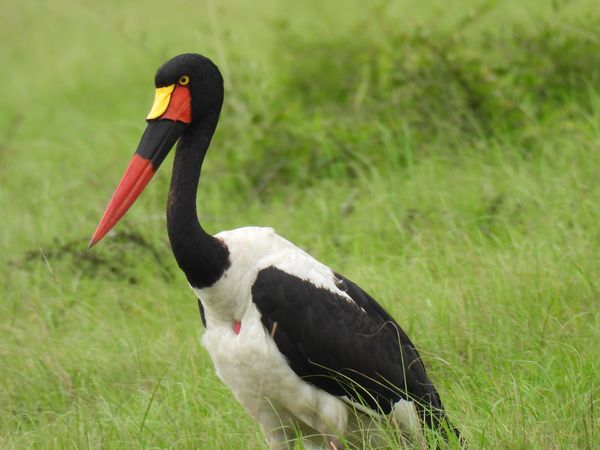
What other suggestions can you give to birders interested in your area?
For independent birdwatchers with high expectations, hiring a local guide is highly beneficial as it increases the chances of seeing uncommon and localized species, contributes directly to the local economy, and creates an incentive for the protection of birds.
Birding in Uganda is done throughout the year between its two dry seasons: December to February and between May, June and August.
Things to bring with you for a birding tour in Uganda
- Waterproof light hiking boots/shoes
- Gardening gloves
- Long-sleeved shirts/blouse
- Long Pants/short pants
- Toiletries
- Insect repellant
- Sunglasses
- Hat
- Sanitary wear
- A good pair of Binoculars
- Field bird guide book (Birds of East Africa)
- Rain jacket/Coat
- First aid kit
- Bottled drinking water
- Extra batteries
- Energy giving snacks
- Scarf and warm sweaters
If any reader of 10,000 Birds is interested in birding with you, how can they best contact you?
- Tel: +256760332388 (WhatsApp)
- Email: info@africanbirdingjourneys.com
- Website: https://africanbirdingjourneys.com
Is there anything else you would like to share with the readers of 10,000 Birds?
Yes! I am also committed to saving Shoebills and all other birds in Uganda! I am very grateful for taking this opportunity to introduce the Save Shoebill Conservation Project (SSCP) to you.
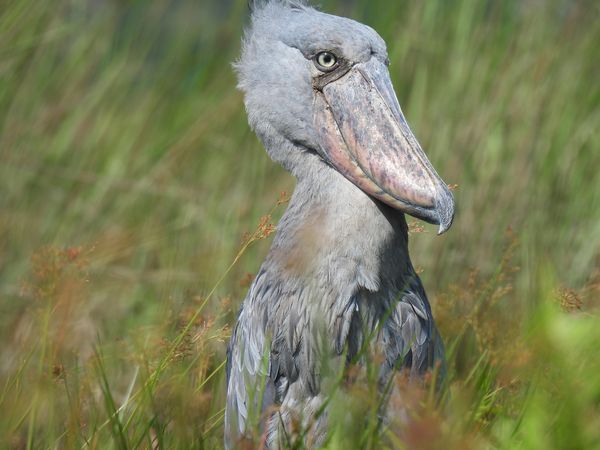
We are a community-based organization in Murchison Falls National Park Uganda (SAVE SHOEBILL CONSERVATION PROJECT ‘SSCP’). We are involved in ecotourism and conservation projects aimed at building a mindful community about shoebill importance, value and conserving its habitat along with all other birds. This organization was formed by a team of dedicated ornithologists involved in environmental conservation activities around Murchison Falls National Park, a key biodiversity area in Uganda with the overall goal of excelling in nature protection and creating opportunities for sustainable lives, the inception of SSCP was a result of the impact of human activities on the Murchison falls-Albert Delta wetland system and other ecosystems.
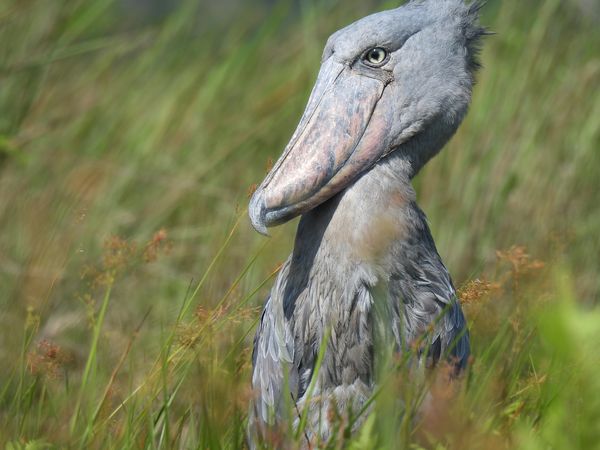
Our site is a key water bird area within the Rift Valley chain of lakes, marshes, and rivers. As well as resident bird species these habitats are important for many migratory birds both by species and by numbers, including palearctic birds. We are committed to conserving this wetland habitat and we are doing habitat surveys to show the extent of any ‘patchwork’ of habitats e.g. mud, open water, waterside margins, and the use by other species of these areas as well as within the dense papyrus required by the shoebill.
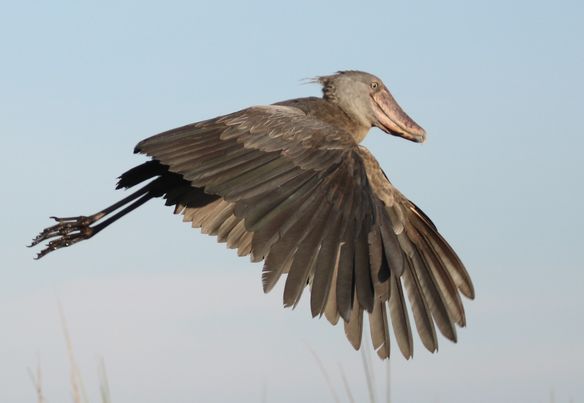
We are currently carrying out the regular monitoring of resident and migratory bird species, assessing usage and species interactions for shoebill’s ecology and all other birds, for example in terms of predation and competition.
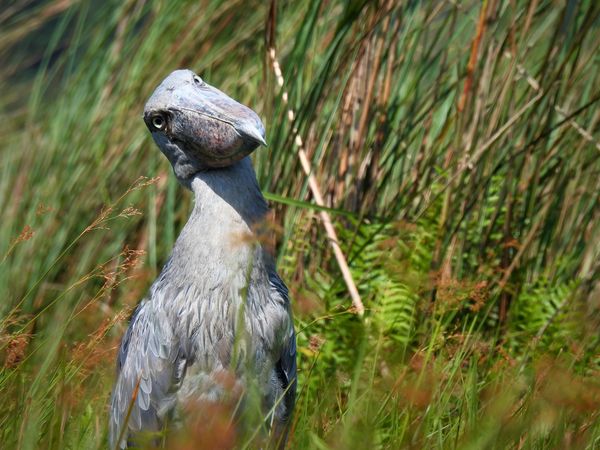
We have developed education programs aimed at school children and local fishermen to conserve and protect Shoebills and all waders and their habitats in Uganda, raising awareness of Shoebill conservation by engaging all the local communities. Our program will improve the understanding of the conservation needs of the Shoebill.
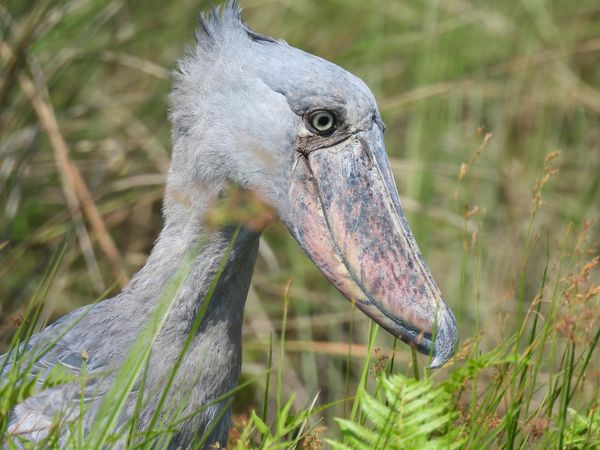
We realize that birdwatching is a booming international ecotourism venture that attracts low volume, low impact, and high return visitors that can boost rural and national economies. Birdwatching is one of the world’s leading recreational activities and in Uganda has the potential to generate revenue compared to Gorilla tourism. The SSCP promotes birding tourism by getting the youth and young children involved, and by training local people as bird guides.
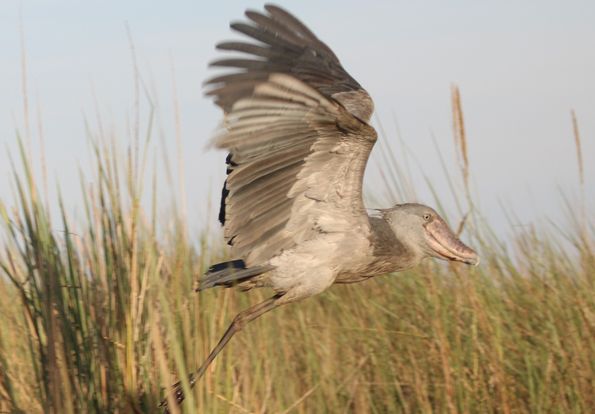
We are calling upon your support in conserving this important Bird Area by involving the local communities. For more information, visit
- USA Office, Email: burkedotcom@gmail.com, Phone: +1 (847) 361-4181 (WhatsApp)
- Uganda Office, Email: saveshoebill@gmail.com, Phone: +256760332388 (WhatsApp)











Kenneth showed good fieldcraft, finding most of the expected birds for us. Outside of birding, his guiding abilities are also to be commended. He is generally unflappable and good-humoured, meeting our requests, or explaining politely why they were not possible. The itinerary and logistics were well organised. And I must say he has been good company out in the field too,…we are planning to go to Kenya with wife and other friend in July next year and we have also booked our birding and mammal tour to Kenya with Kenneth again! Keep shinning my brother